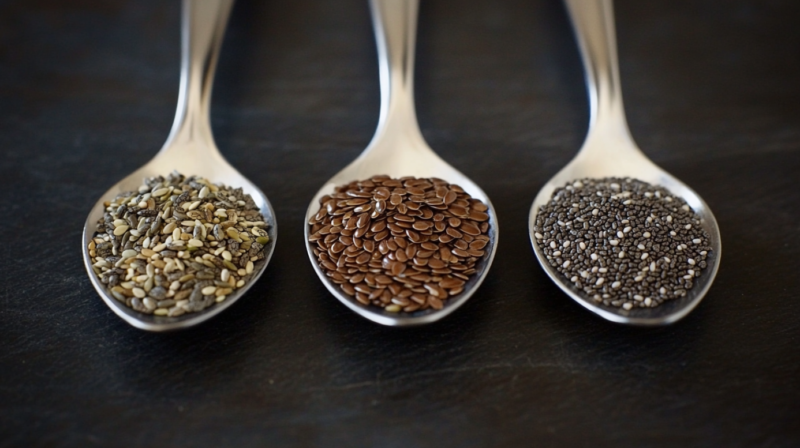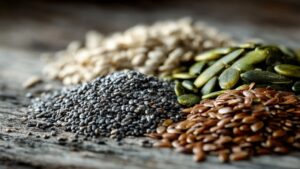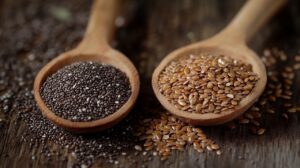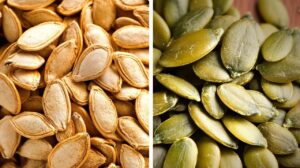Sometimes, the smallest things make the biggest difference. Like saying thank you. Like flossing. Like those tiny little seeds sitting quietly in your pantry—basil, flax, and chia.
They don’t scream “superfood.” They don’t post gym selfies. But inside? Absolute powerhouses.
I’ve worked with food long enough to know that hype doesn’t equal health. But these three seeds? They’re worth the fuss.
Loaded with nutrients, easy to use, and backed by real studies, not just Instagram smoothies.
Let’s get into the why, the how, and the wow.
Key Takeaways
The Nutrient Breakdown
Here’s a side-by-side comparison of their nutritional profiles per tablespoon (approximate values):
Now let’s look at each one, not just on paper but in practice—how they work in your body, how to use them, and what the research says. Not as famous as their cousin chia, basil seeds (also known as sabja or tukmaria) are like the introvert who ends up running the company. They’ve been used in Ayurvedic medicine for centuries to cool the body and ease digestion—and now science is giving them their due. A 2016 study in the NCBI found that basil seeds could help reduce post-meal blood glucose in type 2 diabetics. Their high soluble fiber content slows carbohydrate absorption, which helps manage insulin spikes. They also expand significantly when soaked in water, forming a gel-like texture. That expansion fills your stomach, supports hydration, and makes you feel full faster.
Nutrient
Basil Seeds
Flax Seeds (Ground)
Chia Seeds
Calories
60
55
58
Fiber (g)
7
2.8
5
Protein (g)
2
1.9
2
Omega-3 (mg)
150
2,350
2,400
Calcium (mg)
75
26
77
Iron (mg)
2
0.6
1
Basil Seeds
How to Use
Flax Seeds
Elevated levels of pro-inflammatory, aging-associated oxylipins can be normalized by eating ground flaxseed. https://t.co/o5gvi4N56R
— Michael Greger, M.D. (@nutrition_facts) March 15, 2025
Flax seeds are like that friend who never misses a therapy session, journals daily, and has perfect cholesterol. Rich in omega-3 fatty acids (ALA) and lignans, they bring serious anti-inflammatory and hormone-balancing firepower to the table.
The American Journal of Clinical Nutrition published a study in 2009 showing that ALA from flax helped reduce cardiovascular risk—especially in people with hypertension.
Another study in Cancer Epidemiology Biomarkers & Prevention (2000) linked flax seed lignans to a reduced risk of breast cancer by positively impacting estrogen metabolism.
Flax is also a fantastic source of fiber, which not only keeps digestion smooth but also supports healthy cholesterol levels.
Key Things to Know
- Use ground flax, not whole. Whole seeds mostly pass through undigested.
- Store in the fridge to preserve freshness—omega-3s are delicate.
- Mild, nutty flavor makes them great in baked goods, smoothies, or stirred into oatmeal.
Chia Seeds
@vitalitysphere.360 🔥 8 Reasons You NEED to Eat Chia Seeds in 2025! 🌱💪 #health #healthtips #healthylifestyle #viral #realhealth #fitness #chiaseeds ♬ original sound – Vitality Sphere
Chia seeds may be small, but they’re bold. Once soaked, they transform into a gel-like consistency that feels half dessert, and half functional food. It’s not just fun—it’s effective.
In a 2012 study published in Diabetes Care, daily chia consumption improved blood pressure and blood sugar regulation in people with type 2 diabetes. Other research highlights their role in satiety—thanks to their fiber content—and hydration since they absorb up to 10x their weight in water.
They’re also a calcium powerhouse. Gram for gram, chia has more calcium than milk, making it a favorite among dairy-free eaters.
Quick Usage Ideas
- Soak 1 tbsp in almond milk overnight with cinnamon and maple syrup for chia pudding.
- Add to smoothies, yogurt, or fruit bowls.
- Sprinkle dry onto salads or oatmeal for a crunchy texture.
Why You Don’t Have to Choose Just One
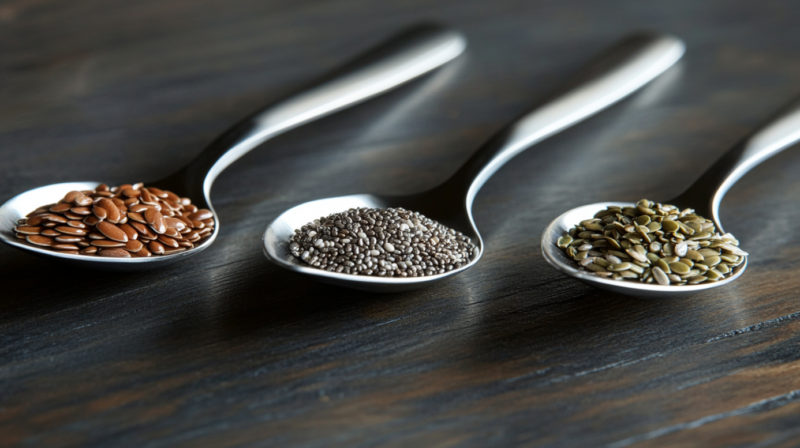
Here’s the beautiful part—they complement each other. Each seed brings a different skill set to the table:
- Basil seeds cool, hydrate, and soothe digestion.
- Flax seeds balance hormones, support heart health, and fight inflammation.
- Chia seeds hydrate, stabilize blood sugar, and offer long-lasting fullness.
You’re not looking at a competition here. You’re building a team.
Rotate them through the week or combine them for a true power blend.
They can be layered into meals without requiring a total diet overhaul. They’re kitchen ninjas, not divas.
Tips to Get the Most Out of Super Seeds
- Start small. High fiber = happy gut (eventually), but go slow to avoid bloating or discomfort.
- Hydrate well. Especially with chia and basil—fiber needs fluid to do its thing.
- Grind flax. You’ll actually absorb the nutrients instead of, well, passing them.
- Store smart. Keep flax in the fridge. Basil and chia are fine in a dark, cool cabinet.
Final Thoughts
There’s something wonderfully simple about adding a tablespoon of seeds to your day. No meal plan overhaul. No supplement drawer the size of a toolbox. Just real food, in real form, doing what it’s done for centuries—supporting the body in quiet, powerful ways.
Basil, flax, and chia might not have six-syllable marketing campaigns, but they have something better: fiber, omega-3s, minerals, and science on their side. That’s more than enough.
So go ahead—sprinkle, stir, soak, or blend. Whatever feels doable today. It may be a small step, but it’s one worth taking.

